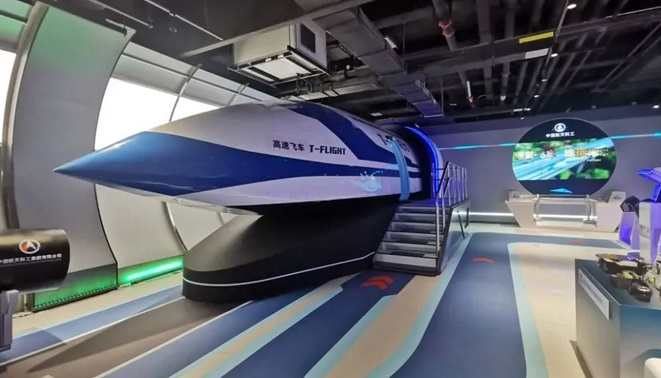The Chinese Hyperloop achieves a speed record exceeding 623 km/h
Even though nearly everyone has concluded that the Hyperloop concept is now unfeasible, China has given it a go and is testing a model that combines elements of the notion with magnetic levitation technology. After a battery of testing, the 1st prototype has now set a speed record.

The developer is the Aerospace Science and Industry Corporation (CASIC), the biggest missile maker in China, which has verified the record-breaking speed reached by a superconducting maglev vehicle.
The company claims to have “exceeded 623 km/h” on a two-kilometer test track, albeit they have not yet validated the precise speed.
In certain tech circles, hyperloop trains have all but vanished from the real world. They are seen as a euphemism for extremely advanced technological projects that boast of their incredible speed and efficiency while omitting several significant issues that limit their potential to little more than obtaining funding from unsuspecting investors.
China’s Hyperloop
The concept is straightforward on paper. Taking a lesson from the vacuum tube message systems of the 19th century, CASIC has enlarged them to the point that they can accommodate whole maglev trains, then sucked out all the air to propel those trains at hundreds of kilometers per hour.
One of the major points is that air resistance is nearly removed when there is no air around, and when magnetic levitation is used, the friction caused by the wheels on the track is also reduced. In the opinion of the gadget’s creators, ought to enable them to theoretically attain top speeds of almost 6,000 km/h. In less than an hour, go from New York to Los Angeles.
Of course, there are many logistical, technological, financial, and security obstacles. Since any failure might result in calamity, hundreds or thousands of kilometers of completely hermetic tubes will need to be deployed and continuously sucked in by vacuum pumps throughout the day.
In Yanggao County, Datong, Shanxi Province, CASIC constructed the longest facility to date—a 2 km test section of low-vacuum tube. For example, the “low vacuum” is between 0.3 and 0.001 bar if the air pressure at sea level is around 1 bar.
The CASIC team recently dispatched its prototype to the track for its first steady magnetic levitation run, following several slower speed tests over the previous few months. While the team has not disclosed the precise speed, local press sources indicate that it exceeded the previous one. Record set by a fast train in October 2023 at a speed of 623 km/h.
With the track expanded to 60 km, the train will now be able to be tested at a goal speed of 1,000 km/h in the second phase of the project.
An important technical advancement that has the potential to completely transform transportation and severely hurt passenger planes, which see ground transit becoming quicker and more environmentally friendly.
Related Post
